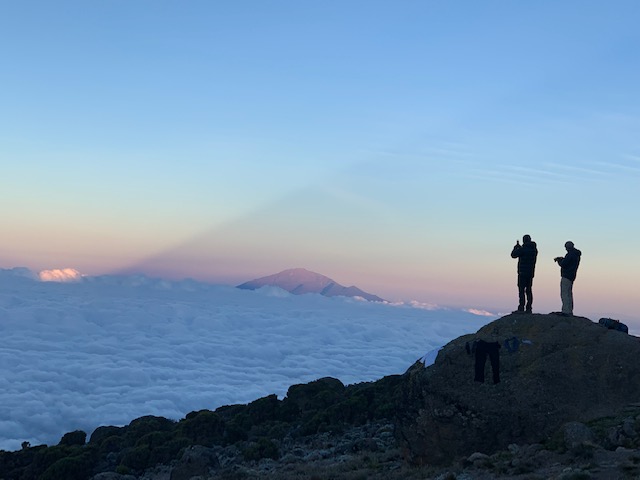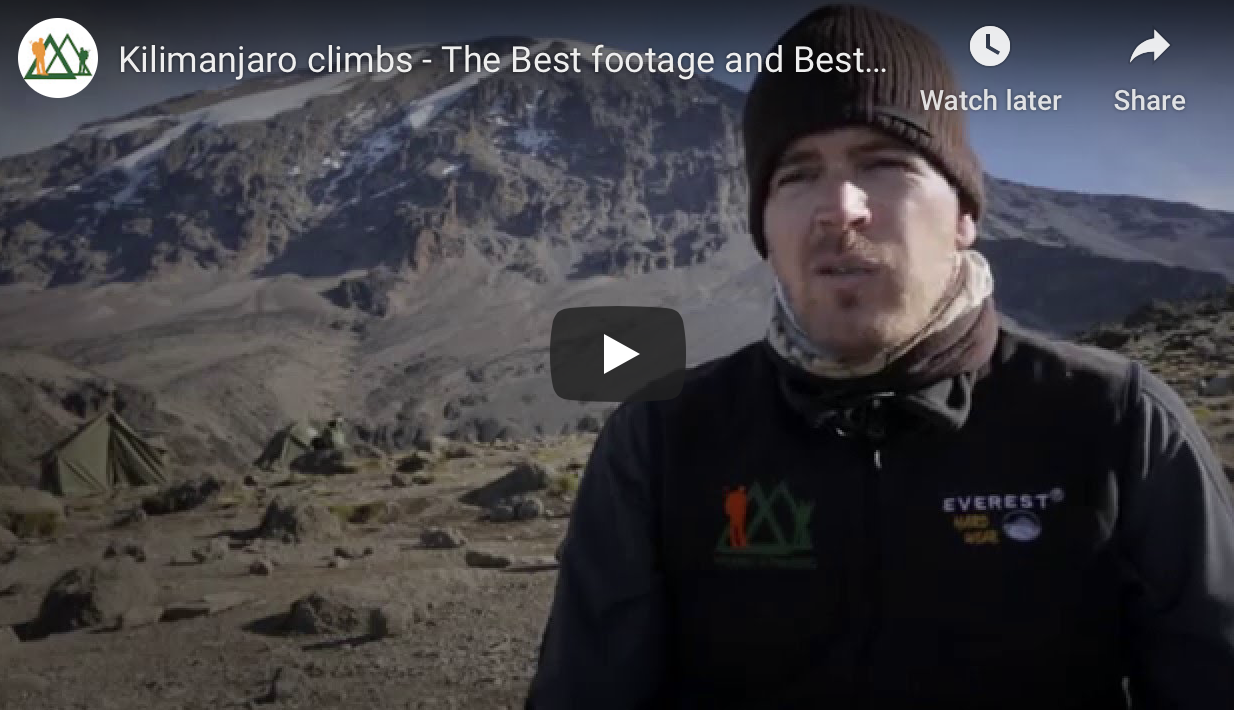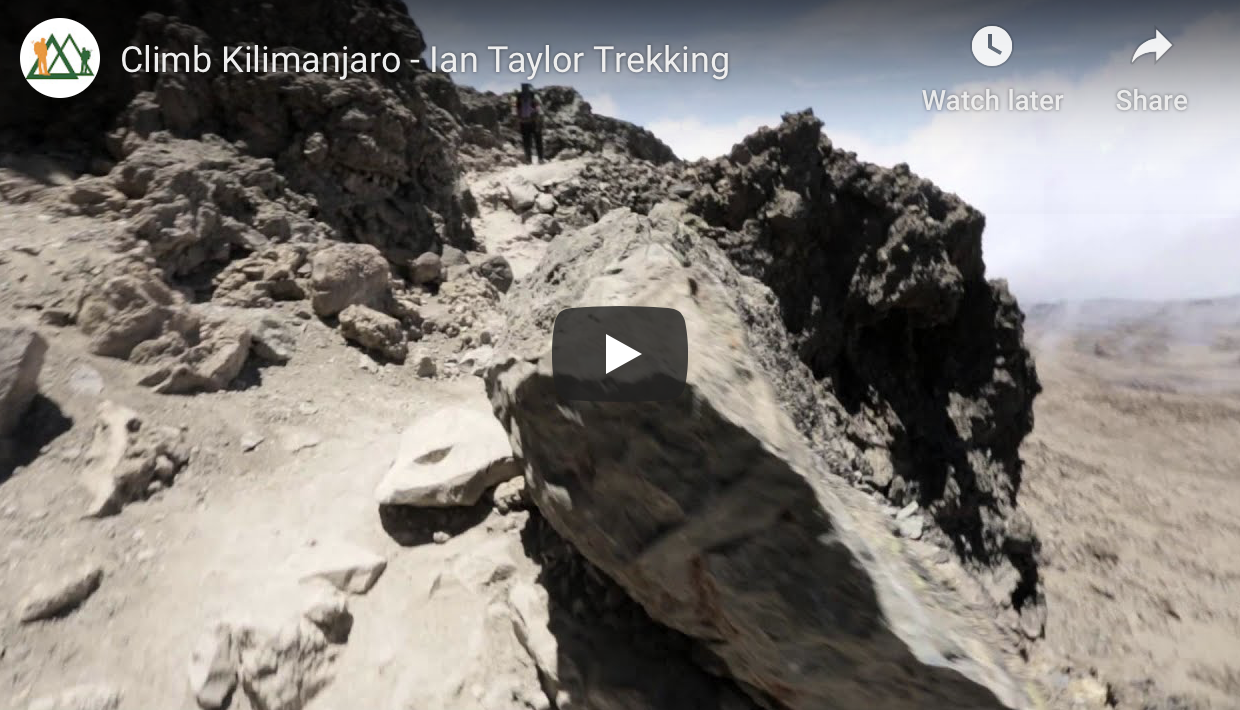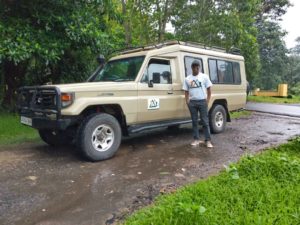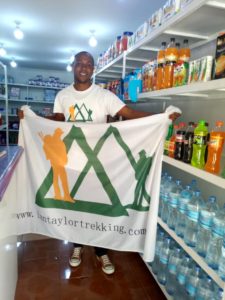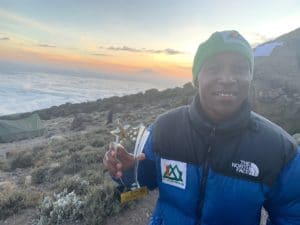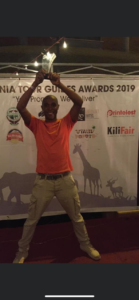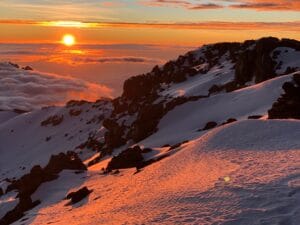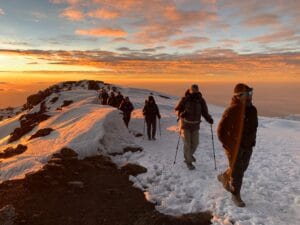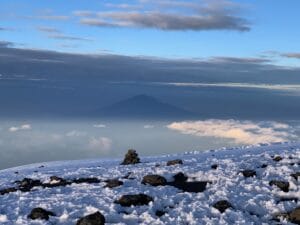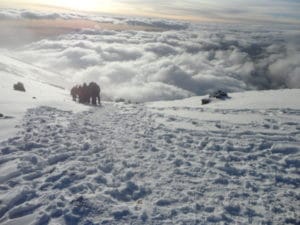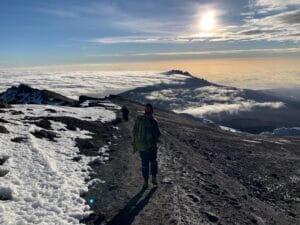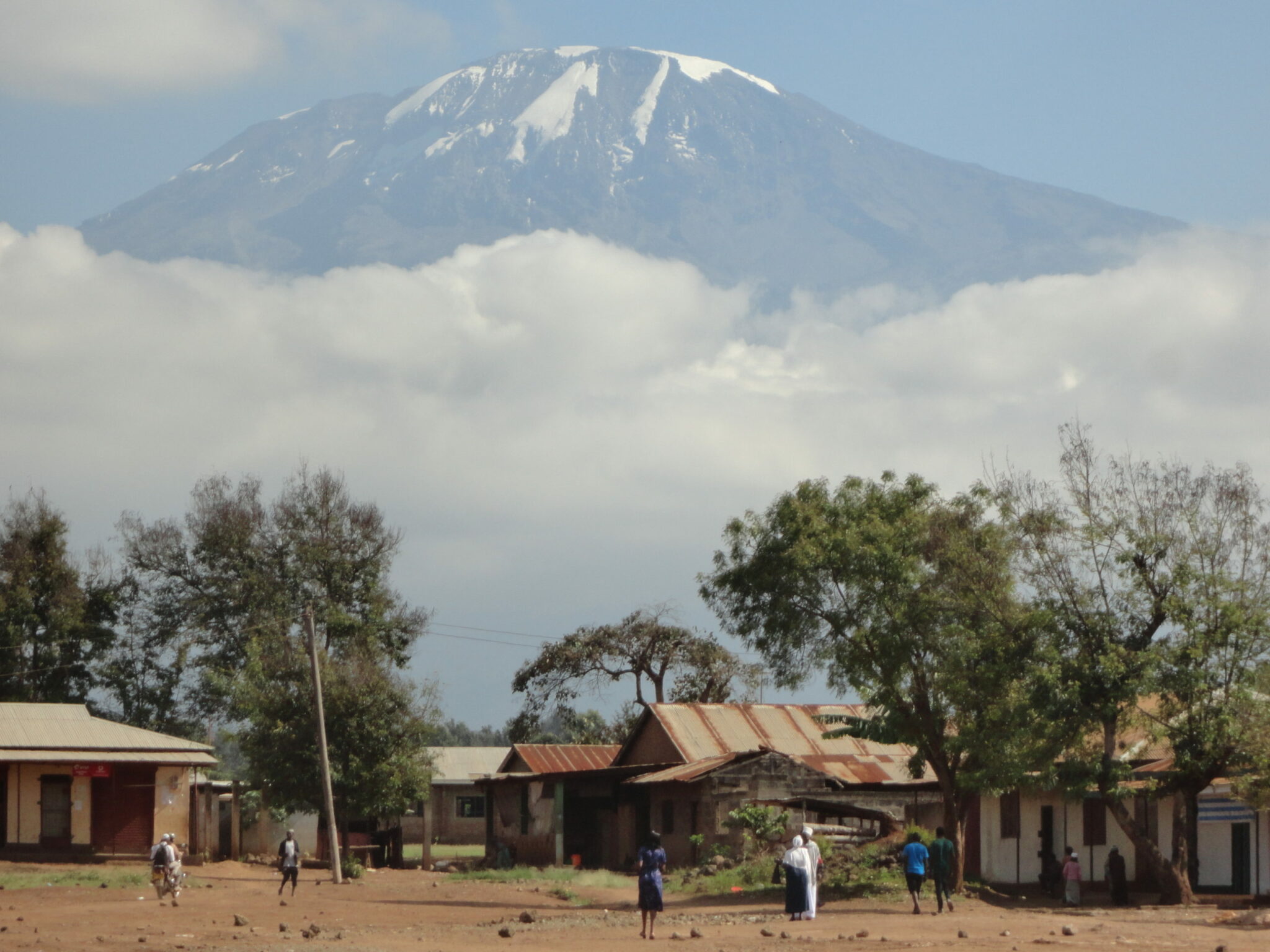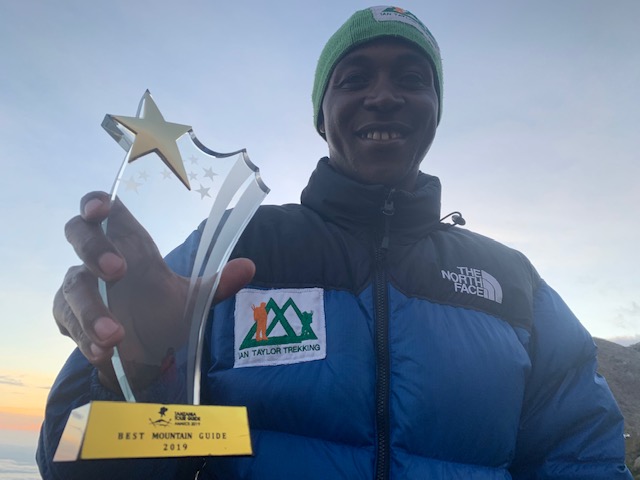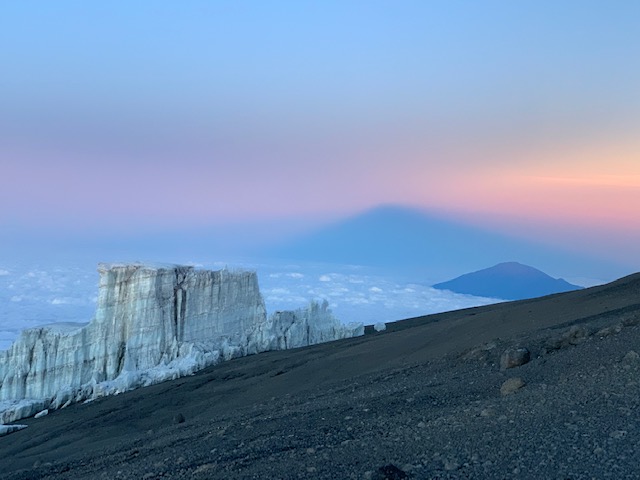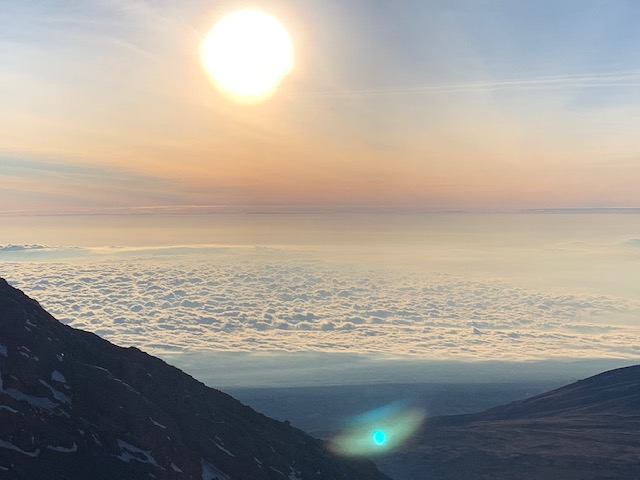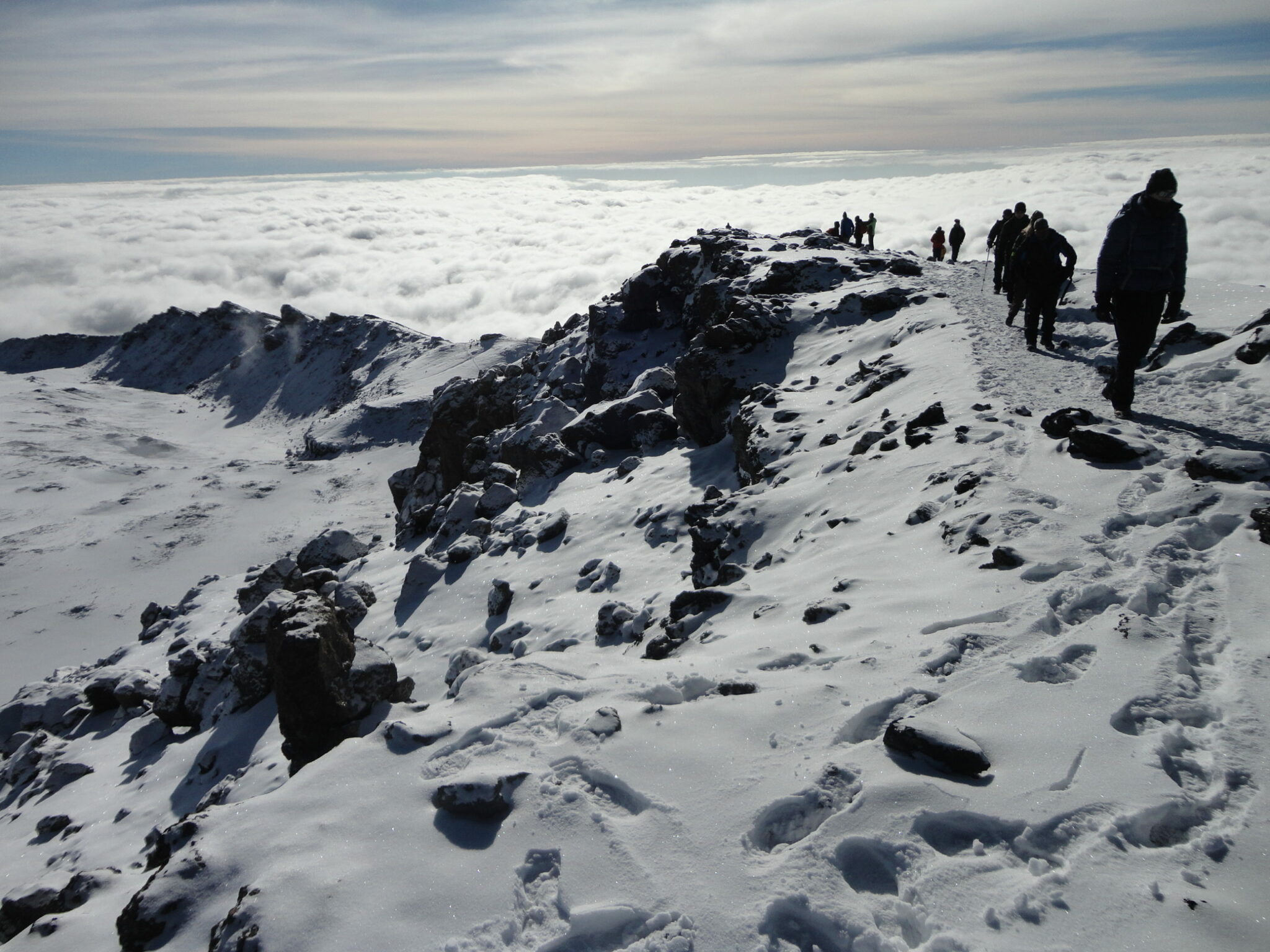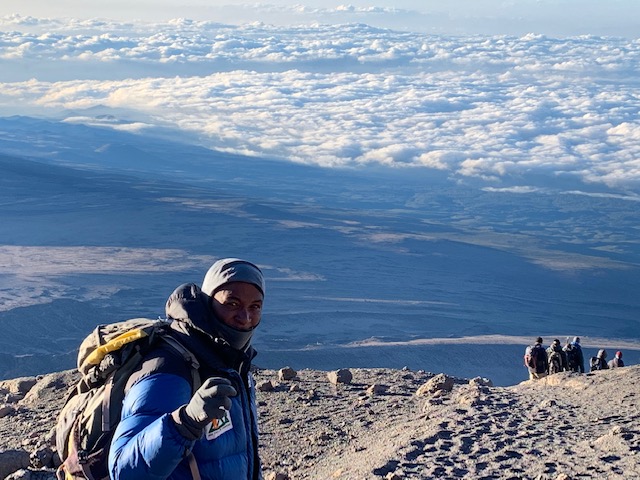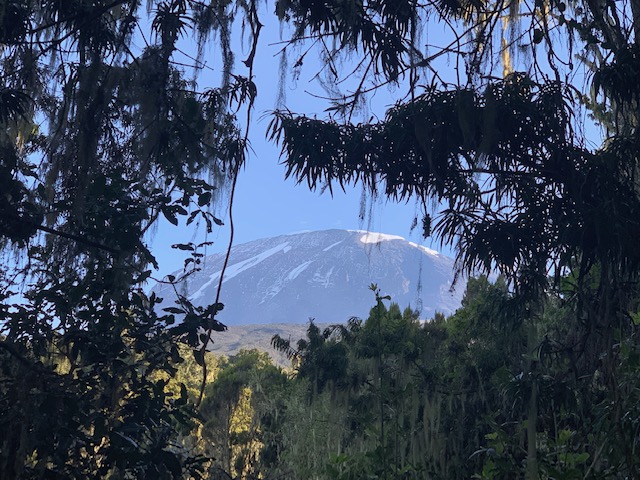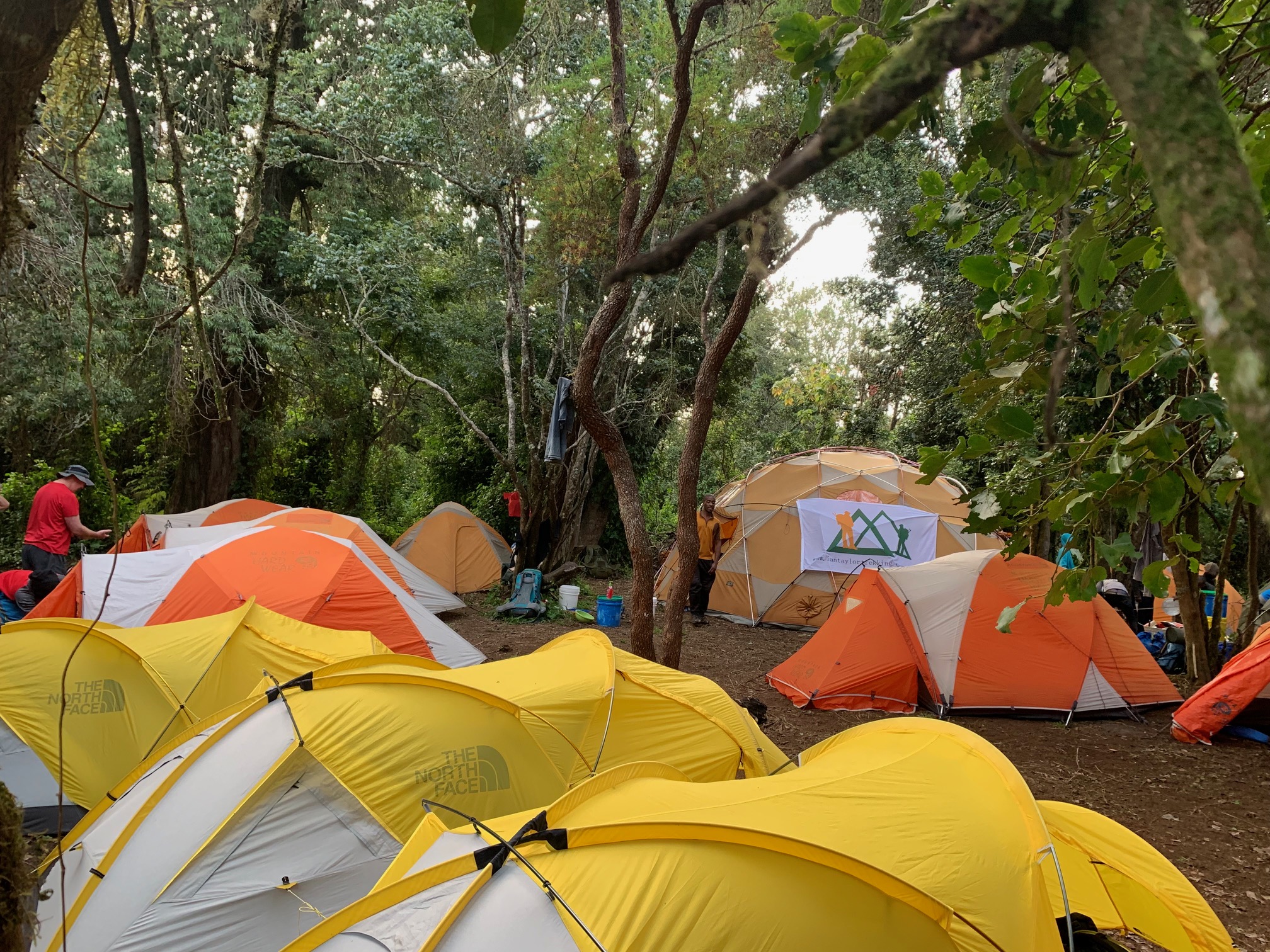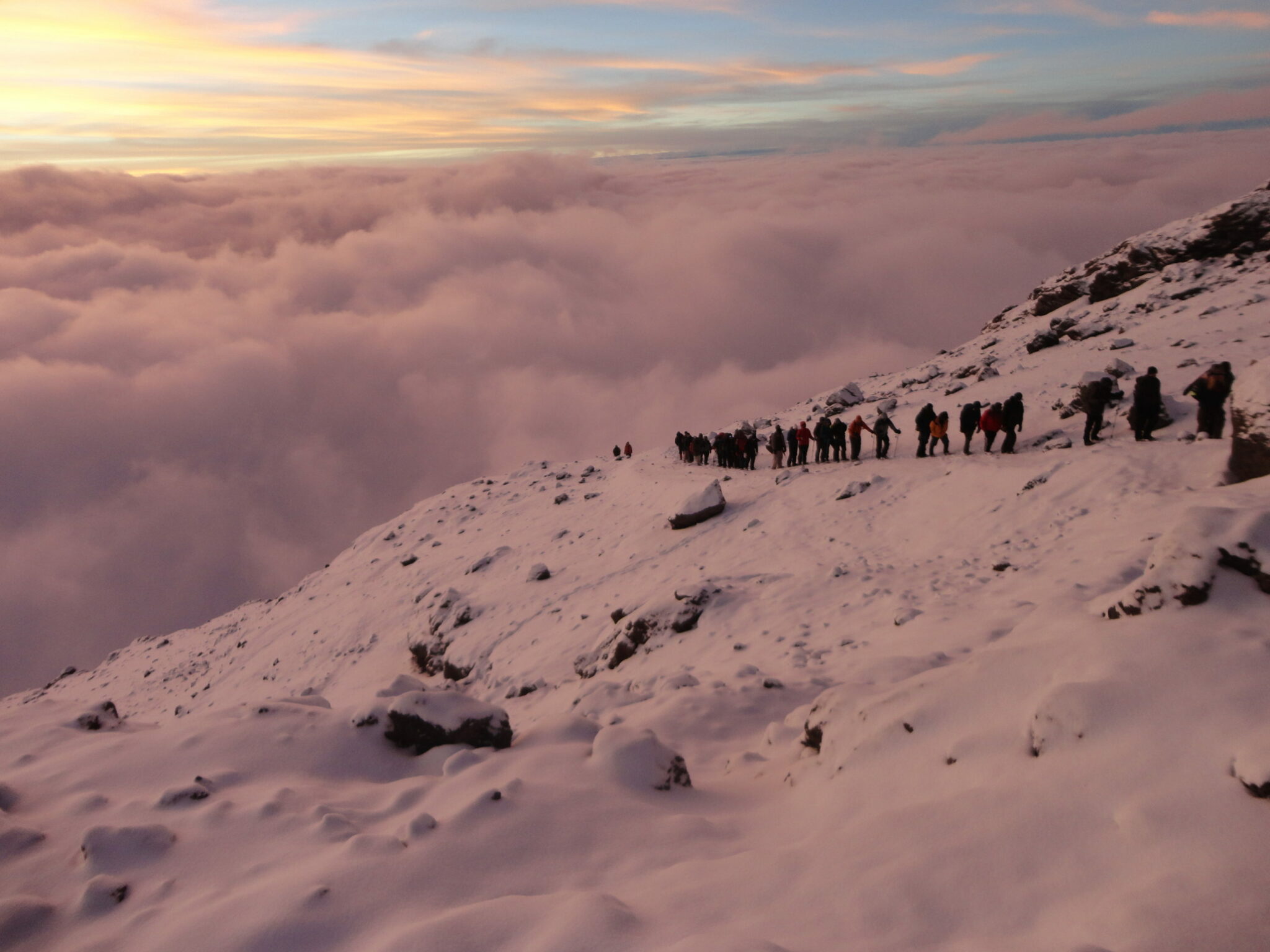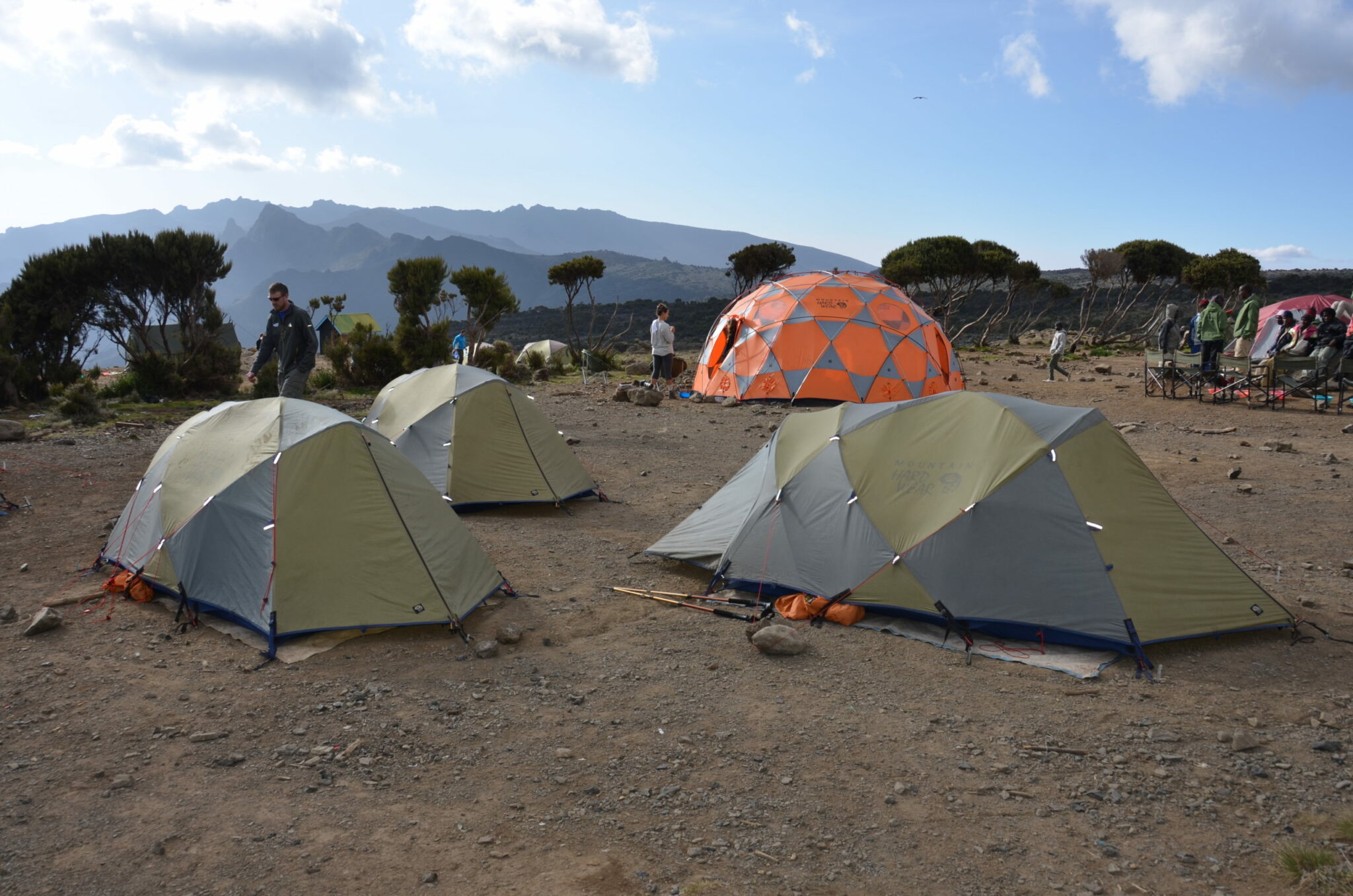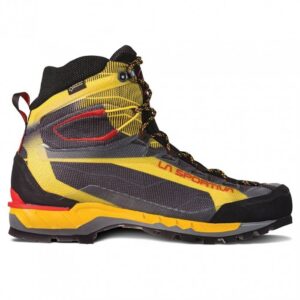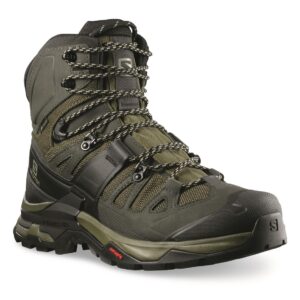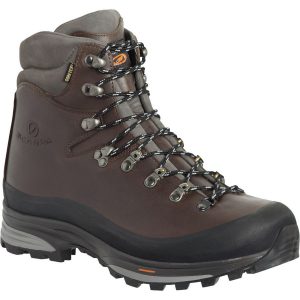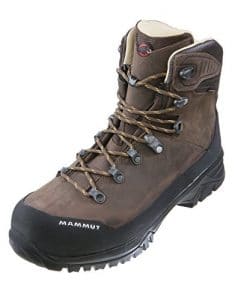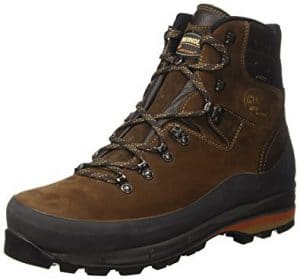Machame Route 7 Days
On arrival in Kilimanjaro International Airport, you will be transferred to the Sheraton hotel in Arusha for our first night’s stay in Tanzania. After an early breakfast the next morning in Arusha, we will then head to the Machame Village, where we begin trekking through the beautiful and lush rain forest towards the Machame Hut.
Join Ian Taylor Trekking on the journey to the Roof of Africa! We have full time and professional staff on the ground in Tanzania and are ready to help you reach your goals on Mount Kilimanjaro. Our Kilimanjaro climbs start at $3,550.
Tips & Advice
He has done it. Our Head Guide on Kilimanjaro has been awarded Kilimanjaro Mountain Guide of the year for 2019. Athumani has been working full time with Ian Taylor Trekking now for 10 years. We are lucky to have the best staff working for us on Kilimanjaro. He has trekked to Everest Base Camp & Island peak and also has dreams of climbing Mount Everest in 2024. DONATE HERE.
Mountain Man
Furthermore, Athumani has worked hard to bring other staff with him. He coaches our team, promotes hard working team members and hand picks our team on the ground. We have invested in him and and he has invested in us! With the support of Ian Taylor Trekking, he has helped our team go to college, learn mountain skills, customer service and become mountain guides. As a result, he is well respected among his colleagues.
Business Man
With Ian Taylor Trekking funding, Athumani has also set up 3 businesses in Tanzania. A small taxi company, mini market and safari vehicle rental business. Athumani has created so many jobs for his community and family.
Family Man
Athumani, his wife Mariam and their two beautiful children have made a wonderful live for themselves in Arusha. He is a true testament to hard work, team work, persistence and doing it right, all while bringing others with him.
The Best of the Best
Athumani has proven himself to be the best of the best on Mount Kilimanjaro. He continues to show that the safety of our clients and teammates is his number one concern. Athumani has help us develop our service along with, our unique 8 day Lemosho route itinerary. Creating a safer journey up and down Kilimanjaro has been our goal and it is working. We are getting 100% success on our unique itinerary.
A Few Words from Athumani
How do you feel after winning the award: This Award means a lot to me, I feel highly recommended in my profession. After winning the award I feel more confident and I will keep working hard for my family, my country and my trekking company. Through winning the award I can raise the credibility of our company which means a lot to me.
This award will increase visibility of how we operate our quality Kilimanjaro climbs on the mountains and hopefully draw new customers. By winning this award I hope it will be a good motivator within our team. Most people who win an award are excited to share the news and I am so excited to about this award. I hope the award increases customer loyalty, by knowing that I am a skilled professional and recognized for my work, team and services we offer.
Why do I like working on Mount Kilimanjaro: I like working on the mountain because is job of my dreams. Since I was young, I was always thinking of working on the mountain and finally I found the amazing geological paradise of Kilimanjaro.
I choose the mountain because it is a physical job. It keeps me active and i stay fit mentally and physically. Also this job gives me a comfortable life and opens more doors to me, like getting a chance to visit some countries abroad.
Working on the mountain gives me a chance to meet with people from different parts of the world. I can learn from these people and they can learn from me. There is no greater gift. This makes my job so special.
After years of running trips on Kilimanjaro, we have decided to compile a list of some of the most important things we have learned. Here are our top 50 tips as you start working your way to the summit of Kilimanjaro. We have helped over 3,000 people reach the summit and have 95% success on our 8 day Lemosho Route trips. Ian has climbed Kilimanjaro 40+ times and our head guide on the mountain was voted Kilimanjaro’s Number 1 Guide. At Ian Taylor Trekking we run over 30 quality Kilimanjaro climbs each year. We are a world leader in offering quality climbs on Mount Kilimanjaro and happy to schedule a free personal assessment with you.
Check our our TOP 50 TIPS for climbing Kilimanjaro.
All our office staff have all climbed Kilimanjaro many times, so if you sign up to one of our trips you are getting the best available information about how to train and fully prepare for your adventure. Read some REVIEWS from our trips.
1). Our Team
We have our own full-time staff members on the ground in Tanzania. Our head guide was voted Best Kilimanjaro Guide in 2019. This gives us far more consistency in our service on the ground and offers you a safer and far more enjoyable experience. This also helps us offer you quality treks, food and professional on the ground assistance from our Ian Taylor Trekking staff at all times.
2). Support the Community
We support a local orphanage, giving help and support to children in need. Why not join one of our climbs and then visit the children and brings books, toys and gifts. We also support our local team helping numerous people each year further their education and start their own businesses on the ground.
3). Quality Run Trips
We only run quality Kilimanjaro climbs with more staff and better food. We use four and five star hotels in Arusha to make sure your stay in Arusha is very comfortable. Read some REVIEWS from our trips. We pay our staff correctly and do not over load them with weight. We do not cut corners on any aspects of our trips. If you want the best overall experience on Kilimanjaro, then join an Ian Taylor Trekking trip today!
4). Information and Advice Before your Climb
We offer personal service with training advice 5 days a week. A lot of people underestimate the Kilimanjaro challenge and, as a result, are coming underprepared. As an example, there are some long days covering over 22km with over 1,245m/ 4,085 feet of up and 2,800m/ 9,186 feet down hill, on steep terrain and at high altitude. This trip is strenuous and therefore you need specific physical strength and endurance.
5). Knowledgeable Staff
Sign up to one of our trips and you will have access to professional advice, from staff who have personally made the journey many times. Our office staff have climbed Kilimanjaro more than most people in all months of the year, therefore we are in the perfect position to help you understand the most important information in your Kilimanjaro preparation. We will help you understand the daily training you should be doing and what clothing and gear you should bring. Likewise, our staff can also help you understand more about altitude, lack of oxygen, elevation gains and distances up and down the Kilimanjaro trail.
6). Access to Ian Taylor
Personal access to Ian and the rest of our team so we can answer all your questions. Ian has climbed Mount Everest to the top, led over 40+ Kilimanjaro climbs and led Kilimanjaro climbs on the Rongai, Marangu, Western breach, Machame and Lemosho Routes. However, most of our trips on run on the Lemosho Route because it gives the safest and most enjoyable experience climbing Kilimanjaro.
7). Building the Best Team
We have over 12 years of experience managing teams on the ground in Tanzania. As a result, this has helped us master the service and systems required to give people life changing experiences. Our head guide has been To Everest Base Camp, Island peak and the US. His goal is to climb Mount Everest and reach for the top of Everest after climbing Kilimanjaro over 200 times. Likewise, our team is well connected on the ground with access to all the key organization and authorities. All our guides and staff are passionate about the mountain, local history, culture and their home Country of Tanzania. In addition to this, our team will deliver the best and safest experience possible. We can guarantee that.
8). Safety is our Number One Concern
We carry oxygen and have fully trained medical support staff on all of our Kilimanjaro climbs. As we climb above 3,500m/ 11,500 feet and into high altitude, you need to be evaluated daily. Also, as we move into the lower realm of the death zone at 5,500m/18,000 feet, you need to have access to oxygen and a medically trained team. Because of this, we have 1 to 1 support on all our summit night climbs.
9). We Use Only High Quality Gear
We use quality Mountain Hard Wear tents. The tents we use are 4 person tents for sleeping and only 2 people per tent. This offers more warmth, comfort and space for you. We use Mountain Hard Wear dome tents for dining with quality chairs. This gives you the best possible environment for your rest, which is critical to your overall experience and comfort on Kilimanjaro.
10). Two Nights in the Hotel in Arusha
We include two hotel nights in Arusha, one before and one after your climb. These rooms are on a shared basis and also include breakfast! We use the Sheraton hotel in Arusha, giving you a comfortable place to sleep before and after your climb. You can ask us for further information.
11). More Comfort on the Mountain
After a long day of trekking, we want to make sure you have a comfortable spot to call home for the night! Therefore, we provide you with nice seating for your Kilimanjaro climb. Having comfortable tents to sleep in and a large mess tent to go to in the evenings, gives you a chance to sit with your teammates and enjoy the down time you have on the mountain. We want you to be in a comfortable position with as little stress as possible while on the mountain.
12). Helping you Stay Healthy and Clean
We provide you with water for washing morning and night on all our Kilimanjaro climbs. We have hot water for hand washing outside our dining tent at all times. Hygiene is so important for safe and enjoyable climb. We provide a number of portable toilets throughout the whole climb. We also provide a security team to watch your tents and equipment Enjoy some comforts, good food and good times with our exceptional staff on Kilimanjaro.
13). Excellent Food
We serve you three, three course meals each day on the trail. READ MORE information about our food service on our Kilimanjaro climbs. We can guarantee quality food throughout the climb. You will experience freshly made soup for lunch and dinner and we do not cut any corners. We know we need to fuel your adventure so we only serve professional grade meals each day, cooked by our amazing chefs Ede, Jumaa and Said. Furthermore, we also have 3 to 6 kitchen staff on any given trip. You will meet Nelson, Enock and Samuel. All the same staff, all the time on Kilimanjaro.
14). Excellent Chefs
We have a quality chef and sous chefs on all our treks. We have the same chefs on all our Kilimanjaro climbs and we pay them very well for their amazing work. That is why they keep coming back to work with Ian Taylor Trekking year after year. The service, food and quality are what is drawing people to our Kilimanjaro climbs. We are working with the chefs to write a book called ‘Food of Kilimanjaro’ we hope we can get some funding soon and get this project off the ground.
15). And Excellent Porters
Our porters will carry a maximum of 15kg/ 33lbs of your personal gear on the trail. Some companies are overloading staff, however we do not. We actually have more staff on the mountain in support of your Kilimanjaro ascent. If you sign up to one of our trips, then we will provide you with a 40+ page Dossier on the trip with all the information you need to be successful. It will also include an itemized kit list for you to review and we will help you get the right clothing advice for your Kilimanjaro climb. Watch our PACKING VIDEO as it is the most viewed packing video on You Tube.
16). Celebration Meal
After you have completed your Kilimanjaro Climb, then we will leave the park and head five minutes down the road for your final meal with the team. The spot we will have lunch is a great stop where you can clean up in a nice bathroom, do a bit of souvenir shopping and enjoy your final meal prepared by our team! This meal is included in the trip. You will be presented with your certificate of achievement and we will enjoy a beautiful meal before heading back to Arusha for well deserved shower.
17). We Support the Communities we Work in
We support projects in all the areas we operate in. Above all, we want to give back to the areas that have provided for us! After Climbing Mount Everest to the summit, Ian and his climbing partner raised enough money to build the Mount Everest Primary school, which is located in the neighboring country of Uganda. In the Kilimanjaro area, we support an orphanage for children in need. In Nepal, we have built two schools and help the Goli Village Trust, which we helped establish. Ian is also aiming to climb Kilimanjaro 50 times to raise money for funds for water projects in East Africa.
18). Friendly and Knowledgeable Guides
If you want learn about the the Tanzanian people, then you want to learn from the best. All our tour guides are only too happy to join you at each meal and talk about their journey and help you understand their people and where they come from. With more days on the mountain you will have time to really learn from them and in addition to this, they want to learn from you. Come and learn from the best.
19). Smaller Group Sizes
We only work with small group sizes. The maximum number of people per team will be 10 people. Most of our groups are between six and ten people, thus giving you are more personalized experience on your Kilimanjaro challenge. You can move as a team and experience more about the mountain from our staff. The only larger teams we have are when Ian Taylor is leading the team himself!
20). One to One Support Staff on the Summit
We have a ratio of 1 guide to 2 people on our trips and 1 to 1 support on the summit night. Therefore offering you a more personal service, safer experience and trip of a lifetime. CONTACT US for more information on our quality Kilimanjaro climbs.
Preparation & Training
Assess where your at
When deciding to climb Kilimanjaro, you need to consider your current ability, access to training facilities, and how much time you have to dedicate to training. All of these things will determine if you are successful on the climb. If you think running and walking on the flat with a weighted backpack are enough, you need to think again. Leg strength and endurance training are important for safety and success.
Plain and simple, spend more days acclimatizing on the mountain and build up specific physical training. This will give you the best chance at safely reaching the summit and getting back down again without guides having to carry your backpack. These are the two main reasons why people are not successful reaching Uhuru Peak on Kilimanjaro. We can help your understand this specific training.
The Two Main Factors
Firstly, In my opinion you need a minimum of 8 days on Kilimanjaro. Taking eight days on Kilimanjaro will give you the best acclimatization process and the best experience possible. Climbing Kilimanjaro is truly one of the great trekking experiences. So why not spend more days on the mountain to get the most out of your experience. I know it costs more, but you will come away with a much richer experience.
Secondly, you need to make sure that you are coming with the right training and preparations. We are available 5 days a week, to make sure you are getting the best information on the climb. We want to make sure that you have the tools to be safe and successful.
Think About the Elevation Gains and Lack of Oxygen
Day 1: Hike from 5,380 feet to 9,301 feet
Day 2: Hike from 9,301 feet to 12,631 feet
Day 3: Hike from 12,631 feet to 15,200 feet. Sleep at 12,795 feet
Day 4: Hike from 12,795 feet to 13,780 feet down to 13,123 feet
Day 5: Hike from 13,123 feet to 16,000 feet
Day 6: Hike from 16,000 feet to 19,341 feet back down to 10,170 feet
Day 7: Hike from 10,170 feet to 19,341 feet back down to 5,577 feet
When you think about these elevation gains and long steep descents you need to review the daily distances, elevations gains up and down. Consider the incline on ascent and descent and think how you train for low oxygen environments. We can help you understand the key elements to this and how you can map out a training plan for climbing Kilimanjaro.
Hiking up and Down Hills is the Best Training
Hiking up and down hills with weight is by far the best training you can do. Try to build up from 3 hour to 8 hour hikes once a week. Taking regular and increasingly longer hikes will help develop the muscles that you need when you arrive on the side of Kilimanjaro. This can not be on the flat. You need to trying to gain 500m/ 1,640 feet, building up to 1,000m/ 3,280 feet ascents and descents. However, very few people are lucky enough to have access to hills every weekend. Try to find some local hills or stairs to walk up and down if possible. Gradually increasing the duration of your walks will help to develop your stamina and also assist in preparing you for being on your feet over long distances.
When out on training hikes, ensure that you always wear the boots you intend to take to Kilimanjaro. Getting used to and breaking in your trekking boots will assist in making you as comfortable as possible on your climb. It is also good to train in the same backpack you will be taking with you on the climb. This will help you feel at ease with it and gradually add weight to the pack to build strength. Building up gradually from 6kg/ 13lbs to 12kg/ 26lbs over a 6 month period.
The Dream Team
Our Head Guide was voted Kilimanjaro’s Number 1 Guide in 2019 and we have had the same team on the mountain for 10 years. We are highly invested in our staff. If you are signed up to an Ian Taylor Trekking trip you will be on the mountain with our staff, who know us personally. We do not outsource our trips on the mountain. Therefore you know you are in good hands with people who know what it takes to aid in your success! We have our own chef’s, kitchen crew, guides, porters and assistant staff to make sure your every need is met on the mountain!
Talk to the Experts
Before you travel to Tanzania, we will be here to answer all of your questions. We want you to have access to the right information. Cumulatively our office staff have 45+ Kilimanjaro trips under their belts! Have a look at our upcoming trips and start planning your journey to the Roof of Africa!
Day 1). Sheraton Hotel to Machame Camp
We use the Four Points Sheraton hotel in Arusha, which sits at 1,400m/ 4,593 feet above sea level. From here, Our guide team will pick you up from the hotel after breakfast and transfer to Machame gate 1,640m/ 5,380 feet. We will sleep tonight at the Machame Camp at 2,835m/ 9,301 feet. This is a 6.4 mile/ 10.3 km trek. Elevation gain of 1,195m/ 3,921 feet.
Day 2). Machame Camp to Shira Cave
The routine on most days on the mountain will be to wake at 6am, breakfast at 7am and then leaving the camp by 8am. The hike to the next campsite takes approximately six hours and you should arrive around 3:00pm. Most people find this a hard day and important to regulate your heart and take your time. Tonight, we will camp at the Shira Cave camp located at 3,850m/ 12,631 feet. This is a 3.1 mile/ 5km hike. The elevation gain is 1,015m/ 3,330 feet.
Day 3). Shira Cave to Barranco Camp
Today is another long day, and will be a good test as you will trek up to the Lava tower, at 4,633m/ 15,200 feet. You will take a very slow pace which helps with adapting to the lack of oxygen. This trek will take approximately 4 and a half hours to reach the high point of the Lava Tower. After a 3 course hot lunch, you will then drop down into Barranco Camp at 3,962m/ 13,000 feet. This is a 7/8 hour hike 6.1 mile/ 9.8km. Elevation gain 783m/ 2,569 feet and descend 671m/ 2,201 feet.
Day 4). Barranco Camp to Karanga Camp
After a good nights sleep, you will be up at 6am for 7am breakfast. We have amazing challenge for you today! We head up the Barranco Wall, check out our You Tube video on the wall. Everyone always says it is easier than they pictured. This can take a couple of hours to reach the top at 4,200m/ 13,780 feet. Upon reaching the top, we take a break right under the summit in the distance. Then, you will continue on easy trails up and down as we cross Kilimanjaro to the Karanga Valley. Then with the camp in view across the Valley, we drop steeply down 140m/ 460 feet, before coming back up 120m/ 400 feet to the Karanga Camp at 4,050m/ 13,287 feet.
The trek today is approximately 4 hours and nice break from the previous days trekking. The total distance today is 3.5 miles/ 5.6km. The wall is an initial steep ascent of 300m/ 984 feet. Descend 140m/ 460 feet down into the Karanga Valley, before going back up 120m/ 400 feet.
Day 5). Karanga Camp to Kosovo Camp
Today starts the business end of the trip. You will leave at 8am and take our time, walking very slowly and saving all our energy for the final climb. You will take lots of breaks on the section and continue to cross around Kilimanjaro before a final steep section to Barafu Camp at 4,650m/ 15,256 feet. This is where most people stay before their ascent of Kilimanjaro. We move through Barafu Camp and hike an additional hour further to Kosovo Camp at 4,900m/ 16,076 feet. Today you will walk 2.2 miles/ 3.5km. Elevation gain to Kosovo camp is 850m/ 2,789 feet.
Day 6). Kosovo Camp to the Summit. Down to Mweka Camp
You will wake up at 11:30pm for a 1am departure from Kosovo Camp. However, this will depend on the conditions, size of the group and a range of other factors. You should start drinking water (a liter if possible), start eating some food in your tent, and prepare to leave. It will get colder later in the night and if the winds pick up it can feel very cold. Remember, tonight is not easy, so when you are mentally struggling you need to remember to breath deeply. Incorrect breathing can ruin your summit. Deep breathing in through your nose out through your mouth, focus on breathing and foot placement and try not to get discouraged.
It normally takes about 5 and a half hours to 6 hours from Kosovo Camp to the summit. The last 2 hours to the carter rim will test you, so stay focused and believe you can do it as you are almost there. From Stella Point at the carter rim it is one hour to the summit on easier terrain. Then, you have reached the Roof of Africa!
From the summit back to Kosovo Camp can take 2-3 hours. You will have a chance to rest for a few hours and pack up your duffel bag before having lunch and moving down lower. You will head down to Mweka Camp at 3,100m/ 10,170 feet. This will take 4 hours down hill. Finally, the long day will come to an end! The full day is 12 – 14 hours of trekking and covers 11.2 miles/ 18.1km. The elevation gain is 1,095m/ 3,592 feet up from Kosovo Camp to the summit. You then have 2,795m/ 9,169 feet down hill all in the same day.
Day 7). Mweka Camp to Mweka Gate
After an amazing nights sleep in Mweka Camp, we will have a quality breakfast before saying goodbye to our world class Kilimanjaro crew. However, our head guide, who is Kilimanjaro’s Number one Guide, and assistant guides will stay with you all the way until the end. From Mweka Camp to the Mweka Gate takes approximately 3 hours. After lunch, you will get back in the bus and then drive back to our hotel in Arusha. Today is 5.8 miles/ 9.3km. Descend 1,400m/ 4,593 feet.
Everything Comes Down to Summit Night
Kosovo camp is at 4,900m/ 16,076 feet. Your Kilimanjaro climb will come down to one long summit night and day. If you are leaving from Barafu Camp, you will likely leave around midnight, and if you are leaving from Kosovo Camp, you will leave around 1am. No matter where you leave from, it is a long, slow and mental challenge to reach the summit of Kilimanjaro at 5,895m/ 19,341 feet.
Our Approach to Summit Night on Kilimanjaro
After 17 years of climbing on Kilimanjaro we have developed the best approach to summit night to maximize safety and success. If weather allows and winds are low, we will be taking off from the higher camp of Kosovo. The reason that our teams can do this is because we have taken adequate time to acclimatize lower down on the Shira Plateau. If you are only on a 5-7 day trip, it can be risky going all the way to Kosovo Camp for the night. The reason for this is that your body would not be able to cope with the altitude with less acclimatization.
Our teams aim to reach Kosovo camp at 12 mid day. Indeed, this will give our bodies the time for additional acclimatization and most importantly rest and sleep. By staying at the higher camp, we will also position ourselves away from the noise of the main camp. Review the elevation gains.
Kilimanjaro’s Number 1 Guide
At approximately 11pm it will be time to get up and to start getting dressed and your gear ready. It is important to start slowly drinking water. The goal would be to try and drink 2 liters of water before you leave on the summit night. At 12:15am we will be served breakfast in the dining tent and you can fill your Nalgene bottles with boiled water for the night ahead. Some people like to have 2 Nalgene bottles (2 liters of water) for their summit attempt. This is a personal choice on how much you carry. Make sure you keep well hydrated during the whole trip and even prior to joining the Kilimanjaro climb. Our Head Guide is Kilimanjaro’s Number 1 Guide so you will be in good hands.
Start Hiking to the Summit of Kilimanjaro
At 1am, we will start hiking towards the summit. We will aim to gain 200m/ 656 vertical feet, per hour on route to the summit. Our goal on the summit night is to keep a very strict routine while going up. We will walk for an hour and then stop, drink water, eat some snacks and go to the toilet just off the trail. Each stop will be 5 to 7 minutes, depending on the weather. We will repeat this for the next 5 hours as we slowly edge our way above 5,500m/ 18,000 feet. As we reach this elevation we may need to stop every 30 minutes as the lack of oxygen becomes more challenging. At this stage, we will begin to slowly move towards Stella Point, as light hits the horizon.
Steep Terrain up and down
The last section up to Stella point is one of the hardest during the night. The pace will be slow and steady as you focus on deep breathing. Once we get to Stella Point, it will likely be very cold, so we will rest for 5 minutes and have some hot tea. Then, we will continue the 50 minutes to the true summit. The terrain is now a little easier than the previous hours to reach Stella Point. The lack of oxygen is challenging, so you need to make sure you are focusing on deep breathing all the way up to the summit. Getting oxygen into your body is the most important thing you should be thinking abouton your summit attempt. After 6/7 hours of walking up hill you will reach the summit of Kilimanjaro!
Standing on the Summit of Kilimanjaro
Enjoy the achievement of reaching the summit of Mount Kilimanjaro!! You will have dreamt of this moment for months even years. Savor the moment, as it will stay with you for the rest of your life. After the struggle and challenge to reach the summit is over, remember you are only half way. The descent is steep and takes a lot of focus as the terrain is challenging under foot.
The Steep Descent
Next, we will begin to move as a team back to high camp, which should take about 3 hours. It is extremely important to get back down below 5,500m/ 18,000 feet as quickly as possible. Depending on what time we reach high camp, you will have some time to rest, re-hydrate, eat a full lunch, pack your bag and slowly make your way down the trail. We will make our way all the way down to Mweka Camp at 3,100m/ 10,171 feet. From the summit, this is a 2,795m/ 9,170 feet drop down to the camp! This WILL likely be one of the most challenging days of your life to cover this distance!
Not everyone will have access to hills, but this is the best way to train your body and legs for down hill hiking. Depending on your chosen adventure you do need to assess the level of downhill. We have elevation gains available for all of our key trips. I encourage you to review the daily elevation drops and what type of terrain you will be walking on.
For example, on our Inca trail treks you will be drop 700m/ 2,296 feet to 1,000m/ 3,280 feet on different days all on steep rocky stairs. On Kilimanjaro you will drop 2,800m/ 9,186 feet in one day on scree and rock and this is very challenging on your legs and joints.
You have just walked for days on end you have reached your goal but not you have to retrace your steps, often in a quicker time frame. Hiking downhill will take its toll on your joints. Fore sure, the downhill hike will take more wear and tear on your joints and muscles than the uphill.
You do need to use effective training techniques to minimize the impact on your body. Descending using good technique means that you move faster and feel lighter. Remember, 80% of accidents happen on the way down.
Keeping Knees Healthy
We live in Eagle-vail Colorado with amazing access to altitude and a wide range of mountain terrain to train on. In Colorado we can train all year round on hilly terrain preparing for Kilimanjaro, Himalayan trekking and mountaineering trips. I know most of you are joining our trips from sea level and with minimal access to hill training. I encourage you to get out to Colorado doing some multi-day hiking in preparation for your chosen adventure.
If you do not have access to hills and mountains, you must figure out other ways to prepare your knee joints to handle downhill stress. From a knee perspective, downhill hiking means eccentric loading and typically thousands of repetitions of it. Eccentric loading (the lengthening phase of a contraction) is especially challenging to what is called the patellofemoral joint of the knee. This is where the knee cap, meets the femur. Inadequate strength, poor mechanics and lack of exposure to this type of loading can turn downhill forces into injury producing stress. Prior to your trekking trip you need to start implementing sport specific training into our general preparedness programming.
Hiking Uphill and Downhill
Hiking uphill is all concentric muscle action (muscle active while shortening) at the knee joint without any eccentric loading (loading while muscle is lengthening). Concentric only exercises tend to cause less mechanical stress, load and pain to joints and tendons than do exercises that have eccentric phases. What goes up must come down.
You must prepare our body and specifically your knees to handle downhill hiking. Depending on the trip, you really need 6 months of some sport specific training into our general preparedness programming.
The strength movements below are similar but slightly different in specific ways. We purposely only hit each one once per week because too much volume of these exercises could quickly lead to an over training injury, so be careful. I would recommend adding in additional hip flexor and quadriceps mobility work at the end of your training sessions as well to maintain good length tension relationships and to protect your spine.
The Point of These Exercises
Increase vertical loading volume of the knees with a sight posterior to anterior (back to front) force vector. Get exposed and accustomed to decelerating the vertical and forward forces using primarily a knee strategy. Transition from doing most lunges and squats with a 3 points of contact foot position to a more heel elevated position where we contact and press through the forefoot.
The 3 points of contact foot position is the most stable position for the foot and encourages a balance of hip and thigh musculature – great for general preparedness training. Transitioning to a heels elevated position where the forces are applied through the forefoot places most of the stress on the quadriceps and knees – optimal for downhill hiking training.
Exercises for Downhill Hiking
You should consider adding these movements into your weekly training 2 times per week. Add 3-5 sets of 10-15 repetitions (per leg)
1). Heels Elevated Goblet Squat
2). Forward Alternating Lunge with Farmers Carry Loading
3). Forward Alternating Drop from Box Lunges
4). Banded Posterior to Anterior (PA) Forward Lunges
Carrying Weight
One of the best ways of mitigating the risk of musculoskeletal issues is by carrying a light pack. Then build up the weight you carry over time. An overly heavy backpack is not recommended in the early stages of your training.
Extract its biggest toll on your body during steep and/or long downhill sections, so a hiker should always aim to travel as lightly as the dictates of their skillset and the environment into which they are venturing allow.
If you are carrying weight on longer hike you should slowly build up the weight you carry. You should also consider carry water uphill and dump as much water/ weight as possible for your downhill. Always assess the weight you are carrying for each hike and always build up slowly over time. You do not want to get injured.
Daily Distances
Day 1 - Arrive at Kilimanjaro Airport
You will arrive into Kilimanjaro International Airport. Our staff will be there to pick you up and bring you to our hotel in Arusha. You will meet your room and tent mate at the hotel and start hydrating after your long flight. We normally hold briefings at 6pm depending on the trip. Our head guide will cover the following day and how it will plays out. He will also do a gear check.
Day 2 - Drive to Machame and Hike to Machame Camp 9,301 feet
Our guide team will pick you up from the lodge after breakfast and transfer to Machame gate. This is where you will register before starting the climb. From the park entrance gate (Machame), we will walk for about two to three hours through a dense forest of fig and rubber trees, begonia flowers, and other tropical vegetation. A stop for hot lunch will be made halfway to this evening’s campsite before we continue our ascent, where we will find that the tropical forest has given way to tall grasses and giant heather.
As we continue along the ridge, to the left there is the Semira stream, and on the right, the Weru Weru. This initial stage of the climb is tranquil and relatively easy, so depending on the pace of the group, arrival at Machame Camp is usually between 5:00pm and 6:00pm. We always recommend clients to walk at a slow, controlled pace as this will aid in the acclimatization process and ease your body into this low oxygen environment . We will sleep tonight at the Machame Camp at (2,980m/9,777 ft).
Day 3 - Hike to Machame Cave 12,631 feet
On this and subsequent mornings, wake-up call is at around 6:00am. We will be greeted with a steaming cup of tea or coffee, and weather permitting, by a fabulous view of Uhuru peak! Today’s trek takes us up a steep track through a savannah of tall grasses, volcanic rock, and bearded heather. Lunch will be taken just below the Shira Plateau, about three to four hours from Shira Camp. The hike to the next campsite takes approximately six hours and you should arrive between 2:00pm and 3:00pm. Most people find this a hard day and important to regulate your heart and take your time. Tonight, we will camp at the Shira Camp located at (3,840m/12,598ft) above sea level.
Day 4 - Hike up Lava Tower 15,200 feet down to Barranco Camp 12,795 feet
After breakfast we will start crossing the Bastains stream, where we will begin to descend towards Barranco Camp, along an immense canyon called Grand Barranco. Along the way, you will see numerous waterfalls, which are fed, by streams coming from the mountain, converging here to form the Umbwe River. We will stop for lunch near the highest point yet reached near the Lava Tower at (4,630m/15,190ft). Today’s trek lasts for about six/seven hours and arrival at the Barranco Camp (3,950m/ 12,595ft) is between 4:30pm and 5:30pm.
Day 5 - Hike up to 13,780 feet down to Karanga Camp 13,123 feet
We have a slightly more leisurely start to today as this is our day to acclimatise. After breakfast we can see the Great Barranco Wall. The Barranco wall looks intimidating but most people find it a fun morning scramble up to (4,200m/13,780ft) and have a leisurely walk to Karanga camp through the Karanga Valley. We reach the Camp for lunch and have a relaxed afternoon with opportunities for walk a little higher or just relax and rest in camp. We consider this day vital in giving you the maximum chance acclimatising and completing your goal of summiting Mt. Kilimanjaro. Tonight we sleep at the Karanga Camp at (4,010m/12,795ft).
Day 6 - Karanga Camp 13,123 feet - Kosovo Camp 16,000 feet
The scenic climb to Kosovo Camp is mostly on moraine with a view of Mawenzi peak towering majestically to the right. Kibo peak seems just out of reach for now. The alpine desert terrain encountered at this point is mostly a mineral environment with few lichens and mosses. Snacks will be needed on route and lunch & dinner will be served on arrival into Kosovo Camp at (4,900m/16,076ft) early in the afternoon. We will all go to bed extremely early today as tonight we will leave for our summit attempt.
Day 7 - Summit Day 19,341 feet to Mweka Camp 10,170 feet
We will awake before midnight and start hydrating and preparing for the summit. After a light breakfast we will start climbing after midnight. It is at this stage that the climb becomes much more difficult and trekkers should carry as little as possible on this portion of the climb. Temperatures will range from (0° to – 15° Celcius / 32° to 5° Fahrenheit). Making our way up the path that is flanked by the Ratzel and Rebman glaciers. We will climb for about five hours before reaching the edge of the crater, between Stella and Hans Meyer points.
Another hour of easier hiking brings you to the summit of Kilimanjaro. Uhuru peak stands at (5,895m/19,341ft) and is the highest point on the African continent. You have achieved and experienced something very special but, It is now time for the decent back to Kosovo Camp. After about two and a half hours from the time you leave the summit, you will arrive in Kosovo Camp. We will take some time to have a quick rest before we pack up all our remaining things and some lunch. It is important to continue down the mountain, all the way to Mweka camp at (3,100m/10,170ft) for the night and some much needed rest.
Day 8 - Hike down to Mweka Gate 5,577 feet
After breakfast then continue to head down to Mweka gate where we sign each of our names and details in a register. This is also where successful climbers receive their summit certificates. Those climbers who reached Stella Point are issued with green certificates and those who reached Uhuru Peak receive gold certificates. We will then return to Arusha, where it is a welcome treat to sleep in a bed, take a hot shower and celebrate!
Day 9 - Safari or Transfer to the Airport
Today will be spent at leisure in Arusha. You can decide to sit by the pool at the hotel or explore the town of Arusha. We will transfer you back to the airport to catch your international flight home. There is also an option for you to stay on in Tanzania and do one of our Safari options, sampling some of the world’s most unique wildlife: https://iantaylortrekking.com/kilimanjaro-treks/safari-in-tanzania/.
Addons
Opening The Mount Everest Primary School
On Monday, the 23rd of March, 2009, Graham Kinch and Ian Taylor officially opened the Mount Everest Primary School in Kitandwe, Uganda. Graham and Ian climbed Mount Everest in the spring of 2008 to raise money for the Kitandwe School Project in partnership with Fields of Life. This concluded a three-year project in which they climbed 4 mountains on 4 continents to build the school. They raised $100,000 for the school and continue to support its future.
The school consists of two blocks totaling seven classrooms and an office, toilet facilities, teachers accommodation, Kindergarten block and a bore-hole pump supplying water to over 600 villagers. The school also doubles-up as a multi-purpose community building.
An appropriate support structure of a Board of Management, trained teachers, a Principal, a PTA, and official curricula, etc., is already in place. In 2013, the Mount Everest Primary is number one in it’s district.
We have world-class Safari’s in Tanzania
We have our own safari vehicle to take you on any safari in Tanzania. Whatever you do you need to have Ngorongoro crater as part of your itinerary. We guarantee it will not disappoint, explore the Serengeti, climb a live volcano and visit Tarangire national park. We have them all rolled into our top class safari’s in Tanzania.
We have developed unique itineraries deep into the wild giving the best experience you can have on safari in Tanzania.
Why not check out our 1 day Safari option in Tanzania.
Itineraries
Tarangire, Lake Manyara & Ngorongoro crater
This itinerary is designed for a more activity safari lover. This is more for someone who wants to experience the real landscape of Africa. We climb a live volcano and visit old ruins and experience lake Natron and it’s baron and desolate landscape.
See More
Ngorongoro and Serengeti National Parks
This itinerary is designed with everything in mind. There is an infusion of the very best of Tanzania. You will Three of the best wild life parks in the world. The Serengeti, Ngorongoro crater, Tarangire National park. We have the Eight Wonder of the World. This is our true wildlife safari giving you the big five in the best safari destination on the planet.
See More
Ngorongoro Crater and Lake Natron Camp
We have a fusion of world class safari parks along with exploring a live volcano and visiting the 1.8 million old Olduvai gorge and the source of humanity. This is our favorite and action packed itinerary. If you want the best of the best in Tanzania this is for you. You will not be disappointed. I highly recommend this itinerary as you will be left amazed, stunned and inspired on this quality Tanzanian Safari.
See More
One Day Safari to Tarangire National Park in Tanzania
See More
Equipment
1). La Sportiva Trango Tech GTX
In our opinion, La Sportiva have great footwear options at the moment. Finding a boot that will last a long time, be comfortable, waterproof and have good support, is always our goal. This option is both a great trekking boot as well as a light mountaineering boot for alpine climbs. They are crampon compatible, however still a lightweight option good for a Kilimanjaro climb. Having the slightly more rigid sole helps keep your foot sturdy and protected on the trails on Kilimanjaro. They will also be a warm option for the cold night spent going up to the summit! These boots would be a great option for the trekking portions on Mount Elbrus or Aconcagua as well.
2). Salomon Quest 4 GTX
Another great option is the Salomon Quest 4 GTX Trekking boots. More and more people are using these trekking boots on a wide range of our trekking adventures in Nepal and around the world. They are comfortable, sturdy, waterproof and a very resilient trekking boot. They will give you the warmth you need on the cold night walking to the summit as well! We would recommend these boots for Everest Base Camp, Aconcagua, Mount Elbrus, and a range of other treks.
3). Scarpa Kenesis
Ian has used the Scarpa Kenesis pro GTX trekking boots for a few years. They are a little heavier than other trekking boots but a great boot for Kilimanjaro. If you maintain them well, you will have them for years. Scarpa are always re-inventing trekking boots and if they fit your foot correctly, then they may be the right boot for you. They work great and last a long time.
4). Mammut Trovat
Ian has also used a range of Mammut trekking boots over the years. He really likes the Mammut Trovat guide High trekking boots. They are really durable, reliable and will last a long time. The high ankle support is great for the rocky terrains you will encounter and all around a great boot for Kilimanjaro. All these boots will last a long time if you look after them well.
5). Meindl Vakuum
You could also consider using the Meindl Vakuum trekking boots for your Kilimanjaro climb. These are also a good option a wide range of trekking peaks and multi-day trekking adventures. These are a very popular boot and we see a lot of clients arriving to Tanzania in this option. They are an excellent choice for mixed rocky terrain and long distance hiking. These boots will be with you for many miles as they are an extremely durable boot. Also, this could be a good option for you if you feel the cold in your feet as they will be a warmer option.
Once you have signed up to one of our Kilimanjaro climbs, then we will send you our 35 page trip Dossier. The Dossier includes an itemized kit list, training advice and other relevant information to help you come fully prepared to Tanzania. Here is our packing video, showing you what items Ian will bring on his next Kilimanjaro climb.
What you Should Considering Packing for Kilimanjaro
Our itemized kit list does not have to be followed word for word. We appreciate that trekkers have their own preference regarding clothing, but we hope this list will ensure nothing is overlooked. The weather can vary from week to week so you need to be covered for all eventualities.
Chat With the Experts
We are your best resource for getting the right gear for your climb of Kilimanjaro and will be available to you 5 days a week to assist you.
FAQ
Q). Is it difficult to climb Kilimanjaro?
A). The question how difficult is it to climb Mount Kilimanjaro is a very tough one to answer! If you are used to hiking long distances weekly covering 1,000m/ 3,280 feet, carrying your backpack with weight. Along with, training 5 days a week and in good physical conditioning. You might find it straight forward. Also you have 8 days on the mountain, this gives added acclimatization and safety. We use Kosovo Camp at 4,900m/ 16,076 feet which helps on the long and challenging summit night. Learn more.
Q). What are the best months to trek Mount Kilimanjaro?
A). Traditionally, the weather on Mount Kilimanjaro is fairly predictable. Kilimanjaro has dry seasons and rainy seasons. Some months have more sun, some months have to more cloud cover and other months are colder than others higher on the mountain. We highly recommend January, February, June, July, August, September, October and we like a New Year trip from December into January. Learn more.
Q). How difficult is the Barranco wall?
A). A lot of people have fears when it comes to the Barranco Wall. However, the truth about the Barranco wall is that 95% of this infamous place on Kilimanjaro is just slow walking. There are just a couple of scrambling sections on the lower and upper most part of the wall. They do not require any technical experience, just a bit of extra focus, good balance and core stability. Learn more.
Q). What will the food be like on Kilimanjaro?
A). Every company is different. We only run Kilimanjaro tours to the high quality. We only serve hot meals each day with 3, 3 courses meals a day on Kilimanjaro. Learn more.
Q). How much is the visa fee to enter Tanzania?
A). Right now the visa fee ranges from USD $50 to $100. For US clients it is $100, while most European countries will pay $50.
Q). What vaccinations do I need to enter Tanzania?
A). Tanzania does NOT have Yellow Fever in the country, so they only require you to show proof of vaccine for Yellow Fever if you are from a country that does have Yellow Fever. Or transiting for more than 12 hours in an airport located in a country with risk of Yellow Fever Virus transmission. Here are some recommended for vaccinations entering Tanzania: Tetanus, Hepatitis A, Typhoid, Hepatitis B, Poliomyelitis, Cholera, covid19 and tablets to protect you from getting malaria. Learn more.
Q). How much does it cost to climb Kilimanjaro?
A). After putting over 3,000 people on the summit we have developed a quality system and unique itinerary for a successful Kilimanjaro Summit. If you want to give yourself the best chance of success you will be paying $400 to $500 per day to have 35+ quality staff, quality tents, equipment, safety equipment, quality food and all the systems in place. So, for a 7 day Machame route tour you will pay anywhere from $2,500 to $4,000 including airport pick up and drop off and hotel nights on either side of the trip. For a 8 day Lemosho route climb you will pay anywhere from $2,900 to $4,500 depending on the hotels, service the company offers prior to the climb. If you have a western guide it can cost even more. Remember 8 days on the mountain gives you the best and safest chance of standing on the summit. Learn more.
Q). What additional expenses will I incur?
A). Here are some additional expenses that you will incur. Visa Entry, meals in Arusha, Tips, laundry, souvenirs, insurance, helicopter evacuation cover.
Q). How much should I tip the staff and can I give individual tip for the porter who carried by backpack?
A). We recommend tipping the staff as a group on the last morning of the trip in Mweaka Camp before descending to the gate. The tips can be given to Athumani or Head Guide and they will distribute to the Dream Team. We recommend $300.
Q). What evacuation cover do I need to have?
A). We recommend having Global Rescue Helicopter evacuation along with their or any insurance that covers trip cancellation cover, repatriation along with medical expenses.
Q). What challenges will I face climbing Kilimanjaro?
A). You will possibly experience rain, wind, hot, cold temperatures all in one week. High UV levels from the sun, so stay covered up. The higher realm of Kilimanjaro sits in Extreme altitude. The biggest summit day of your life! Going up 1,000m/ 3,280 feet from Kosovo Camp to the summit and back down to Mweka Camp. Possible physical fatigue, depending on physical preparation. You will not sleep as well as you would at home. It can be challenging to sleep in a sleeping bag and tent if you have experience doing that. Learn more.
Ready to go?
The Machame route is for stronger hikers and one of the best ways to experience this geological paradise. Take the next step towards achieving your goals of climbing Kilimanjaro. We pride ourselves in making sure that our clients have every opportunity to succeed on the mountains, including professional training advice, gear lists and video links on how to pack your bag, and much more. Join Kilimanjaro’s Number 1 guide!
We are always available to answer any questions you may have by email or phone, so contact us today!


